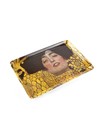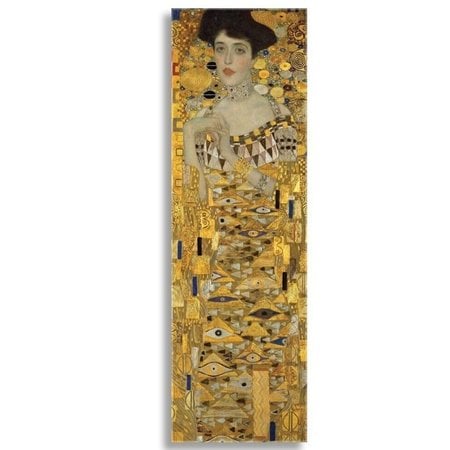"Judith" van Klimt Tray
"Judith" van Klimt Tray
€9,95
Small tray for 2 cups of tea, coffee or a festive treat. 21 x 14 cm. An important part of the appeal of the work is furthermore the special decorative effect. Judith's face is shown with an almost photographic precision, embedded in a background full of g
Fast worldwide delivery
Secure payment
14 days to change your mind
- Product description
- Reviews
Depicted is Judith, the Biblical woman who, in her finest clothes, gained access to the residence of the Assyrian General Holofernes and then beheaded him, because he threatened to overrun the Jewish people. In Renaissance painting and traditional iconography, Judith is usually portrayed as a devout but determined woman who rises her life to save her people. At the end of the nineteenth century, however, literature and visual arts turned her into a femme fatale, a woman who enjoyed the beheading of a man she had previously seduced, as a model of strength and independence, and a threat to men.
- Related products










